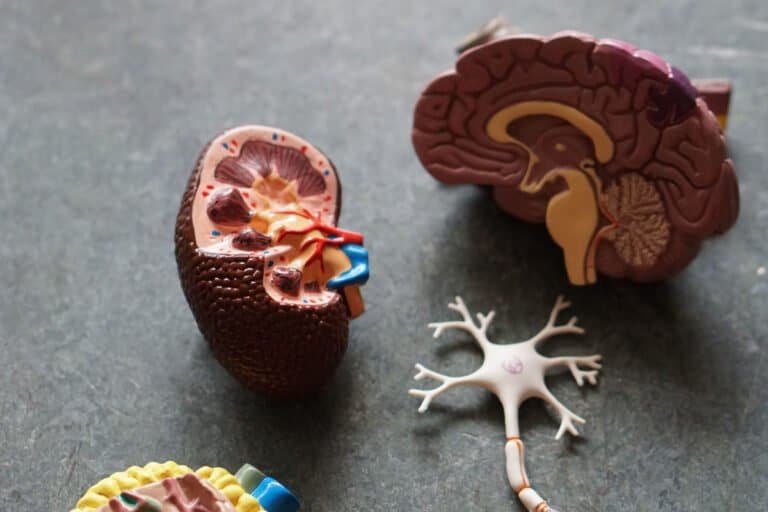Mindfulness vs Meditation
I. Introduction
In today’s fast-paced world, where the incessant noise of technology, work, and societal pressures constantly bombard our senses, more and more people are turning towards practices that center the mind and soul. Two such practices that have seen a significant surge in popularity over recent years are mindfulness and meditation.
From the corridors of corporate offices to the serene ambiance of wellness retreats, these ancient practices have found new life and relevance in contemporary society. While they share similarities and often overlap in practice, many people mistakenly use the terms ‘mindfulness’ and ‘meditation’ interchangeably.
This article aims to delineate the nuances and distinct features of each, helping readers understand and perhaps even embark on their personal journeys of mental and emotional well-being.
II. Background and Definitions
a. Mindfulness
Definition:
Mindfulness is a mental state characterized by a heightened awareness of the present moment. It involves focusing one’s attention on current experiences—such as sensations, thoughts, and emotions—while maintaining an attitude of calm acceptance, without judgment or reactivity.
Rather than getting caught up in past regrets or future anxieties, mindfulness anchors the practitioner firmly in the here and now.
Historical roots:
The concept of mindfulness has deep roots, with its earliest mentions found in ancient Buddhist texts. Known as ‘sati’ in Pali and ‘smṛti’ in Sanskrit, it was considered an essential part of the Buddhist path to enlightenment.
The Buddha often emphasized the importance of cultivating mindfulness for personal transformation and the alleviation of suffering. Over time, this practice spread throughout Asia, interweaving with other spiritual traditions and evolving in its interpretations.
Contemporary understanding and practices:
While the essence of mindfulness remains consistent with its ancient roots, its application has broadened and adapted to the needs of modern society. Today, mindfulness is not just reserved for spiritual seekers but is embraced by a diverse range of individuals.
From therapeutic settings, where it’s used as a tool to combat anxiety, depression, and stress, to educational environments, where it helps students focus and manage their emotions, its benefits are widely acknowledged.
Modern mindfulness practices often involve exercises like body scans, where one systematically pays attention to different parts of the body, and mindful breathing, where one observes the rhythm of their breath without trying to change it. Programs like
Mindfulness-Based Stress Reduction (MBSR), developed by Dr. Jon Kabat-Zinn, have standardized these practices and made them accessible to the public. Through such initiatives, mindfulness has bridged the gap between its ancient origins and the contemporary needs of a global community.
b. Meditation
Definition:
Meditation is a deliberate practice that involves engaging in specific techniques to cultivate a deeper sense of awareness, concentration, and clarity. At its core, meditation seeks to guide the practitioner towards a state of heightened attentiveness and emotional equilibrium.
While there are countless methods and forms, they all share a common goal: to train the mind to transcend its usual patterns, thereby achieving a state of mental clarity and emotional calmness.
Many techniques fall under the umbrella of meditation, from focusing on the breath, visualizing certain images, chanting mantras, to the act of simply observing thoughts as they arise and fade. Some methods encourage a complete stillness of thought, while others promote a keen awareness of one’s environment, thoughts, or sensations.
Contemporary understanding and practices:
In modern times, meditation has transcended its religious confines and become widely adopted for its psychological and physiological benefits. Scientific research has documented its positive impacts on stress reduction, mental clarity, emotional health, and even physical well-being.
Today’s practices range from traditional methods like Zen and Transcendental Meditation to more secular approaches that focus purely on the cognitive benefits.
Guided meditations, often accessible via mobile apps and online platforms, have made the practice more approachable for those new to it.
Whether seeking spiritual enlightenment, a deeper understanding of oneself, or simply a way to de-stress and enhance focus, people from all walks of life now turn to meditation as a tool for personal development and well-being.
Historical Roots of Meditation
Meditation is a practice that predates recorded history, and its roots are embedded in the sacred soils of various ancient civilizations and spiritual traditions. Let’s delve deeper into its historical origins across a few notable traditions:
Buddhism:
Meditation, or ‘Dhyana’ in Sanskrit, is central to Buddhist practice. The Buddha himself attained enlightenment through deep meditation under the Bodhi tree. Two main forms of Buddhist meditation are ‘Vipassana’ (insight meditation) and ‘Samatha’ (concentration meditation). Vipassana aims to see things as they really are, while Samatha focuses on calming the mind.
Hinduism:
Meditation in Hinduism, referred to as ‘Dhyana’, is an integral part of the yogic path. Ancient scriptures like the Vedas, Upanishads, and especially the Bhagavad Gita, discuss the importance and techniques of meditation. Many yogic practices, such as ‘Pranayama’ (breath control) and ‘Mantra Japa’ (chanting), are forms of meditative practices aimed at uniting the individual soul with the universal consciousness.
Taoism:
In Taoism, meditation has always been a central practice, with an emphasis on living in harmony with the Tao, which is described as the fundamental principle that is the source of all existence. Techniques often involve visualization, mantra chanting, and breath control, with the ultimate goal of achieving ‘immortality’ or a deep integration with the natural world.
Other Traditions:
Apart from the aforementioned traditions, meditation has also been integral to many other cultures and religions:
- Jainism: Emphasizes deep contemplation and reflection as a way to attain enlightenment.
- Sufism: The mystical Islamic tradition involves various forms of meditation, known as ‘Muraqaba’ or ‘Dhikr’, to achieve a state of divine love and knowledge.
- Christianity: Contemplative prayer or Christian meditation, such as the practice of ‘Hesychasm’ in Eastern Orthodoxy, centers on quieting the mind and seeking union with God.
In conclusion, meditation’s rich tapestry spans diverse cultures and eras, with each tradition offering its unique approach to attaining peace, enlightenment, or communion with the divine. Its enduring relevance across millennia speaks volumes about its universal appeal and profound impact on the human psyche.
Different Forms of Meditation
Meditation, in its various forms, provides a rich array of techniques tailored to individual preferences and objectives. Here’s a closer look at some popular forms of meditation:
1. Transcendental Meditation (TM):
- Originating from the Vedic tradition of India, TM was popularized by Maharishi Mahesh Yogi in the 20th century.
- Involves silently repeating a specific mantra for 20 minutes, twice a day.
- Promoted as a method to reduce stress and improve well-being.
2. Zen Meditation (Zazen):
- Rooted in Zen Buddhism, this form emphasizes ‘sitting meditation’.
- Practitioners sit in a specific posture, focusing on the breath and observing thoughts and sensations as they arise.
- Aims to gain insight into the nature of existence and the self.
3. Guided Visualization:
- Often led by a teacher or recorded audio, this meditation form guides practitioners through a visual journey in their mind’s eye.
- Can involve visualizing peaceful landscapes, light healing the body, or other calming scenarios.
- Enhances relaxation and can also be used for specific goals like boosting confidence or healing.
4. Mindfulness Meditation:
- Often associated with the Buddhist practice of Vipassana, but is widely practiced in various forms across cultures.
- Focuses on being fully present, observing thoughts, feelings, and sensations without judgment.
- Has gained substantial traction in the West, especially in therapeutic settings, for its benefits in managing stress, anxiety, and depression.
5. Mantra Meditation:
- Involves the repetitive chanting of a word, phrase, or sound (mantra).
- The mantra becomes the focal point, allowing the practitioner to dive deeper into consciousness.
- Common in both Hindu and Buddhist traditions.
6. Loving-kindness Meditation (Metta):
- Rooted in Buddhist traditions, this practice centers on developing feelings of compassion and love towards oneself and others.
- Involves repeating phrases wishing well-being and happiness, progressively extending these wishes from oneself to loved ones, acquaintances, and even those one may have conflicts with.
7. Chakra Meditation:
- Originating from ancient Indian traditions, it focuses on the seven primary energy centers (chakras) of the body.
- Through visualization and concentration, practitioners aim to align and balance these energy centers.
8. Yoga Nidra:
- Often termed ‘yogic sleep’, this is a state of consciousness between waking and sleeping.
- Guided by a set of verbal instructions, it’s a systematic form of deep relaxation.
9. Body Scan Meditation:
- A type of mindfulness meditation where attention is sequentially focused on different parts of the body.
- Promotes awareness of bodily sensations and aids relaxation.
These are just a few of the myriad meditation practices that exist. Regardless of the method chosen, the consistent practice of meditation offers numerous benefits for the mind, body, and spirit.
III. Key Differences
a. Purpose & Objective
Mindfulness:
Mindfulness is a specific type of meditation, but with a broader application in daily life beyond the moments of formal practice. Its primary purpose revolves around cultivating an enhanced awareness of the present moment.
- Immediate Awareness: At its core, mindfulness encourages practitioners to become acutely aware of their current environment, internal feelings, thoughts, and sensations. Whether eating, walking, or even performing mundane tasks, the goal is to be fully present, engaging with the activity with complete attention.
- Non-judgmental Observation: Mindfulness is not just about being aware; it’s about being aware without judgment. It encourages acceptance of whatever arises in the mind, whether pleasant or unpleasant, without trying to cling to it or push it away. This acceptance promotes a balanced mind that isn’t easily swayed by transient emotions or thoughts.
- Enhancing Daily Life: While meditation in general can be more secluded, often requiring a quiet environment and specific durations of practice, mindfulness can be incorporated into every waking moment. Its techniques equip individuals to handle daily stresses, challenges, and even interpersonal relationships with more grace and understanding.
- Therapeutic Applications: In the modern context, mindfulness has been widely recognized for its therapeutic benefits. Techniques rooted in mindfulness, such as Mindfulness-Based Stress Reduction (MBSR) and Mindfulness-Based Cognitive Therapy (MBCT), have been developed to treat various psychological issues, including anxiety, depression, and chronic pain.
In summary, the primary objective of mindfulness is to foster a deep sense of connection and awareness to the present moment. It is a continuous journey of self-discovery and acceptance, enhancing one’s overall quality of life.
Meditation: Broader Objectives Including Relaxation, Concentration, Personal Transformation, and Spiritual Growth
Relaxation:
One of the primary reasons many individuals turn to meditation is for relaxation. In today’s fast-paced world, stress has become an unwelcome constant. Meditation offers an oasis, a haven where one can retreat to find calm.
The act of focusing one’s mind, whether on breath, a mantra, or a guided visualization, helps soothe the nervous system. Over time, regular meditation can decrease levels of the stress hormone cortisol, leading to a more relaxed disposition, even outside of meditation sessions.
Concentration:
Our modern environment is filled with distractions. From constant notifications on smartphones to the demands of multitasking, our attention is continually divided. Meditation, by its very nature, cultivates concentration.
Whether you’re directing your attention to the sensations of the breath or trying to hold a specific visualization, the practice inherently strengthens the mind’s ability to focus. This honed concentration can be beneficial in daily tasks and activities, allowing for greater efficiency and clarity.
Personal Transformation:
Meditation is more than just a tool for relaxation and concentration; it’s a journey of self-discovery. As individuals delve deeper into their practice, they often encounter long-held beliefs, patterns, and traumas.
By consistently observing these mental patterns without judgment, meditation can facilitate profound personal transformation. This introspective journey can lead to increased self-awareness, greater emotional intelligence, and the shedding of detrimental habits or mindsets.
Spiritual Growth:
While meditation doesn’t inherently possess a religious component, it has been a cornerstone in many spiritual traditions for millennia. Many individuals are drawn to meditation not just for its mental and emotional benefits but for its potential to foster spiritual growth. This can mean different things for different people: for some, it’s a sense of connection to something greater; for others, it’s a deeper understanding of the self.
Many describe experiences of profound insight, unity, and transcendence during deep meditation. These moments, often ineffable, can provide a sense of purpose, meaning, and connection in a world that sometimes feels fragmented.
In essence, while mindfulness emphasizes the power of the present moment, traditional meditation encompasses a broader spectrum of objectives. From the tangible benefits of relaxation and concentration to the more profound realms of personal and spiritual growth, meditation offers a multifaceted approach to enhancing one’s overall quality of life.
b. Practice & Application
Mindfulness:
Day-to-Day Integration:
Mindfulness is not just a technique but a way of life. It extends beyond the meditation cushion and intertwines with the minutiae of daily life. Here’s how:
- Eating: Mindful eating involves truly savoring each bite, being aware of the flavors, textures, and sensations. It’s about appreciating the nourishment the food provides and recognizing when we’re full. This practice can also aid digestion and prevent overeating.
- Walking: Mindful walking is another common practice. Each step becomes an event in itself. One becomes aware of the feeling of the ground beneath the feet, the movement of the muscles, and even the rhythm of the breath. It turns a simple act of getting from point A to point B into a meditative experience.
- Conversations: In conversations, mindfulness helps in active listening. Instead of formulating a response while the other person is still speaking, one fully engages with what’s being said, leading to deeper understanding and connection.
Reactive Situations:
Stress, anger, and anxiety are emotions everyone grapples with. Reacting impulsively in the heat of the moment can lead to regrettable actions and decisions. This is where mindfulness plays a crucial role:
- Pause and Breathe: One of the foundational techniques in mindfulness is using the breath as an anchor. In tense situations, taking a moment to consciously breathe can create a space between stimulus and response, allowing for a more measured reaction.
- Non-judgmental Observation: When overwhelmed with emotion, practicing non-judgmental observation helps. Instead of getting swept up in the emotion, one can step back and recognize the emotion for what it is — just a transient state of mind. This doesn’t mean suppressing the emotion, but rather understanding its impermanent nature.
- Respond vs. React: By being fully present in challenging situations and recognizing one’s emotional triggers, mindfulness equips individuals to respond thoughtfully instead of reacting impulsively. This leads to better outcomes in conflicts, negotiations, and any situation demanding careful consideration.
In summary, mindfulness, when integrated into daily life, serves as a compass that continually points towards the present. By fostering an acute awareness of the current moment, it ensures that individuals are not just living, but are truly alive to each experience, making everyday activities meditative and transforming reactive behaviors into thoughtful responses.
Meditation:
Structured Practice:
While mindfulness can be woven into the fabric of daily life, traditional meditation often requires a specific setting and method.
- Environment: Many practitioners designate a special place for meditation, be it a corner of a room, a quiet nook, or a serene outdoor spot. This dedicated space, often adorned with cushions, candles, or incense, becomes a sanctuary of peace.
- Posture: Whether it’s the lotus position, sitting on a chair, or lying down, specific postures can be integral to certain meditation practices. These postures are not just symbolic but also functional, promoting alertness and physical stability during meditation.
- Duration: Meditation sessions are usually time-bound, ranging from short 10-minute sessions to extended hours. Many traditions also incorporate meditation retreats, where days or even weeks are dedicated exclusively to intensive practice.
Variability:
Meditation is not a one-size-fits-all practice. Its diverse forms cater to different preferences and objectives.
- Visualization: Some practices, especially in Tibetan Buddhism and modern therapeutic contexts, involve guided visualizations. Here, practitioners are led through a series of mental images, often imbued with symbolic meaning, to promote relaxation, healing, or spiritual insight.
- Mantras: Chanting or silently repeating mantras, specific sounds, words, or phrases, is central to many meditation traditions, notably Transcendental Meditation. These mantras are believed to elevate consciousness and have vibrational qualities that affect the practitioner at subtle levels.
- Focused Attention: This involves maintaining attention on a single point of focus, such as the breath, a flame, or a sound. Whenever the mind wanders, the practitioner gently brings it back to the chosen focal point.
- Stillness of Thought: Some advanced practices aim for a state where mental chatter ceases, bringing about profound tranquility and clarity.
Spiritual Pursuit:
For many, meditation is not merely a tool for mental well-being but a spiritual endeavor.
- Enlightenment: In Buddhist traditions, meditation is the path to enlightenment, a state of ultimate wisdom and liberation from the cycle of birth and death.
- Unity with the Divine: In many mystical traditions, including certain schools of Hinduism, Sufism, and Christian mysticism, meditation is the bridge to experiencing oneness with the Divine, transcending the individual ego.
- Profound Inner Peace: Beyond specific religious or spiritual affiliations, many meditators seek the profound inner peace that arises from deep meditative states— a peace that provides solace, clarity, and a sense of purpose.
In essence, while meditation might seem rigid in its structure compared to the fluidity of mindfulness, its myriad forms and profound depths offer a vast expanse of experiences, ranging from tangible mental benefits to spiritual revelations.
c. Outcomes & Benefits
Mindfulness:
Emotional Regulation:
At its core, mindfulness is about observation without judgment. When one observes emotions without being caught up in them, a curious thing happens – the intensity and grip of these emotions begin to loosen.
- Awareness of Triggers: By consistently practicing mindfulness, individuals become more attuned to what triggers strong emotions, whether it’s a specific situation, person, or internal thought pattern. Recognizing these triggers is the first step in managing them.
- Response vs. Reaction: Mindfulness creates a gap between stimulus (what happens to us) and response (how we react). This gap provides the crucial seconds or minutes needed to choose a considered response, rather than an impulsive reaction.
- Reduced Stress: As emotional regulation improves, there’s a noticeable decrease in feelings of stress, anxiety, and overwhelm. Challenges are met with a calm demeanor, leading to better decision-making and healthier interpersonal relationships.
Enhanced Presence:
Mindfulness is all about being fully present, fully engaged in whatever is happening in the ‘now’. This deep engagement with the present moment leads to a richer, more fulfilling life experience.
- Savoring the Moment: Whether it’s the warmth of the sun on one’s face, the taste of a delicious meal, or the laughter of a loved one, mindfulness helps individuals savor life’s small joys, often overlooked in the hustle and bustle of daily life.
- Deepened Relationships: Being present means truly listening and connecting with others. Conversations become more meaningful, leading to deepened bonds and improved understanding.
- Clarity of Thought: A mind not constantly distracted by a barrage of thoughts can think more clearly and creatively. Many practicing mindfulness report improved problem-solving abilities and innovative ideas.
- Life Satisfaction: With enhanced presence, life’s moments, both big and small, are lived to the fullest. This heightened appreciation and enjoyment inevitably lead to increased overall life satisfaction.
In summary, the benefits of mindfulness are manifold. It is not just a stress-reduction tool but a way of life that paves the way for emotional stability, enriched experiences, deeper connections, and a profound appreciation of life’s every moment.
Meditation:
Physiological Benefits:
Meditation’s impact extends beyond the realms of the mind, influencing physical health in numerous beneficial ways.
- Reduced Heart Rate: Regular meditation helps in calming the sympathetic nervous system, which is responsible for the “fight or flight” response. This calming effect can lead to a steady and reduced heart rate over time, beneficial for cardiovascular health.
- Lower Blood Pressure: Meditation has been shown to reduce blood pressure, likely due to the relaxation it promotes. Consistent practice can assist in maintaining blood pressure levels within a healthy range, reducing the risk of heart disease.
- Improved Sleep: Those who meditate often report better sleep patterns. As meditation helps in calming the mind and reducing anxiety, falling asleep becomes easier, and the quality of sleep improves. This, in turn, positively affects overall health and well-being.
Cognitive Benefits:
The mental advantages of meditation are well-documented, and they touch on multiple facets of cognitive function.
- Enhanced Focus: Concentration is a cornerstone of many meditation practices. By training the mind to focus on a particular object, thought, or activity, individuals often experience enhanced focus in their daily tasks.
- Better Memory Retention: Meditation stimulates the hippocampus, a region of the brain responsible for memory. Regular practitioners often notice improved memory recall, aiding academic, professional, and everyday life activities.
- Improved Problem-solving Abilities: By promoting clarity of thought and a calm demeanor, meditation can improve an individual’s ability to approach problems rationally and creatively, leading to more effective solutions.
Spiritual Growth:
For many, meditation is not just about physical or mental well-being but a profound spiritual journey.
- Deeper Spiritual Insights: As one delves deeper into meditation, moments of profound insight and understanding can occur. These are not intellectual realizations but deep, intrinsic truths felt at the core of one’s being.
- Self-realization: Through introspection and self-observation, meditation can lead to a clearer understanding of oneself, helping individuals connect with their true nature beyond societal roles and expectations.
- Enlightenment: In many spiritual traditions, meditation is considered the pathway to enlightenment—a state of pure consciousness and liberation from the cycles of birth, death, and rebirth. While this is a lofty goal and not every meditator’s objective, the pursuit itself brings about heightened awareness and spiritual growth.
In conclusion, meditation offers a holistic approach to well-being. Its benefits are wide-ranging, touching every facet of a person’s life—from the tangible physiological improvements and cognitive enhancements to the ethereal realm of spiritual awakening and enlightenment.
IV. Conclusion
Synthesis of the Concepts:
In the vast expanse of mental and spiritual practices, mindfulness and meditation emerge as two prominent methodologies, each holding its unique essence. Mindfulness, with its roots deeply embedded in the present moment, offers an immediate tool for awareness and acceptance.
It invites individuals to immerse themselves fully in the here and now, bringing a conscious presence to every facet of daily life. On the other hand, meditation, in its diverse forms, is a dedicated practice, often pursued in solitude and stillness. It’s a vessel that carries practitioners across a spectrum of experiences—from deep relaxation and cognitive enhancement to profound spiritual insights.
The Unified Goal:
Despite their distinct paths, the destination of both mindfulness and meditation converges towards a heightened human experience. Whether it’s the simple joy of savoring a meal without distraction, the tranquility achieved in a deep meditative state, or the profound spiritual realizations that emerge from dedicated practice, the essence remains the same. Both practices beckon individuals towards inner harmony, resilience, and a profound connection with the intricate tapestry of life.
Personal Application:
Life, with its myriad experiences and challenges, doesn’t offer a one-size-fits-all solution. As such, the choice between mindfulness and meditation isn’t binary but rather a spectrum of possibilities. Some may find solace in the continuous, gentle awareness of mindfulness as they navigate their day. Others might resonate more with the structured sanctity of a meditation session. And many will discover that a blend of both offers the most holistic approach. By delving into the depths of each practice and discerning their unique attributes, one is better equipped to chart a personal journey—a journey that promises growth, peace, and a deeper understanding of the self and the universe.
Frequently Asked Questions:
Q: What is the difference between meditation and mindfulness?
A: Meditation and mindfulness are related practices, but they have some key differences. Meditation refers to the practice of training the mind to focus and achieve a state of mental clarity and emotional calm. On the other hand, mindfulness is the practice of being fully present and aware of one’s thoughts, feelings, and surroundings without judgment.
Q: How do you practice mindfulness?
A: Mindfulness can be practiced in various ways, but one common method is to focus on your breath and observe your thoughts without getting caught up in them. You can also practice mindfulness while doing everyday activities like eating, walking, or washing dishes by being fully present and attentive to the task at hand.
Q: What are the different types of meditation?
A: There are many different types of meditation, including mindfulness meditation, transcendental meditation, concentration meditation, and mantra meditation. Each type focuses on a different aspect or technique to achieve a state of mental calm and clarity.
Q: What are the benefits of meditation?
A: Meditation has been shown to have various benefits, such as reducing stress and anxiety, improving focus and attention, promoting emotional well-being, enhancing self-awareness, and even improving physical health. Regular meditation practice can have positive effects on both the mind and body.
Q: How is meditation different from mindfulness?
A: While meditation is a broader term that encompasses various practices to achieve mental clarity, mindfulness is a specific form of meditation that focuses on cultivating awareness and being present in the moment. In a way, mindfulness is a type of meditation practice.
Q: What are some mindfulness exercises?
A: There are several mindfulness exercises that can help improve mindfulness skills. Some examples include body scan meditation, mindful breathing, loving-kindness meditation, and mindful eating. These exercises can help increase self-awareness, reduce stress, and improve overall well-being.
Q: How can I incorporate mindfulness into my daily routine?
A: You can incorporate mindfulness into your daily routine by setting aside specific times for formal meditation practice. Additionally, you can also practice informal mindfulness throughout the day by bringing your full attention to the present moment during daily activities like eating, walking, or interacting with others.
Q: What are the benefits of mindfulness?
A: Mindfulness has been found to have numerous benefits, including reducing stress and anxiety, improving focus and concentration, promoting emotional resilience, enhancing self-awareness and self-compassion, and improving overall well-being. It can also help cultivate a deeper sense of connection and appreciation for life.
Q: What is mantra meditation?
A: Mantra meditation is a type of meditation practice that involves repeating a specific word, phrase, or sound (known as a mantra) to focus your mind and achieve a state of calm and clarity. The repetition of the mantra helps to quiet the mind and bring about a sense of inner peace.
Q: Is meditation or mindfulness better for me?
A: Whether meditation or mindfulness is better for you depends on your individual preferences and needs. Both practices have their own unique benefits, and some people may find one more beneficial than the other. It may be helpful to explore both practices and see which resonates with you more.






